By: Kevin Alferman
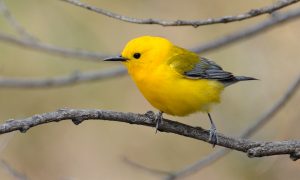
Warblers
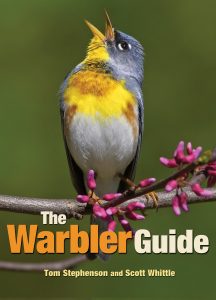
Welcome to the wonderful world of Warblers. Did you know that 37 species of warblers migrate through Missouri in the Spring and Fall? Fall viewing can produce some rewarding looks at the colorful and artistic patterns of warblers, however, they don’t come easy. Most warblers are secretive, hiding among the foliage. They feed actively, primarily on insects, so it seems like right when you’re ready to get a good look, it moves. But keep trying, because when you do get a good look it’s really worth it. In general, warblers are tiny (smaller than sparrows, slightly larger than a goldfinch) and their beaks are short and pointed. Common species that breed in Missouri include Northern Parula, American Redstart, Prothonotary Warbler, Ovenbird, Louisiana Waterthrush, Kentucky Warbler, Common Yellow Throat, and Yellow-Breasted Chat. Uncommon breeding warblers include Blue-Winged, Yellow-Throated, Yellow, Pine, Black and White, Prairie, Cerulean and Worm-eating. Common migrating warblers include Tennessee, Yellow-Rumped, Black-Throated Green, Blackpoll, Palm and Wilson’s. Uncommon migrating warblers include Orange-Crowned, Nashville, Chestnut-sided, Magnolia, Blackburnian, Bay-Breasted, Mourning, and Canada. WHEW! As if that’s not enough, an additional 6 species wing through as rarities. Want to learn more – Check out “The Warbler Guide”.
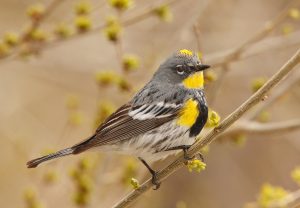
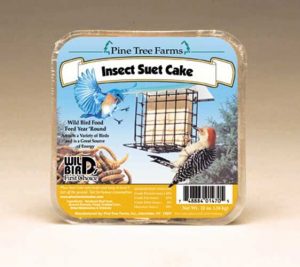
Species Spotlight – Yellow-Rumped Warbler
The Yellow-Rumped Warbler is one of the most abundant warbler species throughout the country. In Missouri, they are abundant migrants from Early October through November, with their numbers reducing through December. A few even stick around through the winter! They spend the summer breeding in Canada and high mountains. Look for them in the higher portions of trees in your yard. Locate them by listening for their often repeated short call (sounds like “check”). It is a well-named species because the yellow rump is a good field mark. It looks like a pat of butter was placed above the base of the tail, giving them the illustrious nickname “butterbutts”. Also, look for the white spots on the black tail (especially visible in flight) and the yellow patches on the flanks. Color patterns and markings are bolder on the male. The male’s body has an overall bluish-gray look, while the female appears more brownish. This species is separated into two subspecies and both migrate through Missouri. The Audubon race is the western variety and has a yellow throat. The white-throated Myrtle race breeds mostly in the eastern U.S. and Canada.
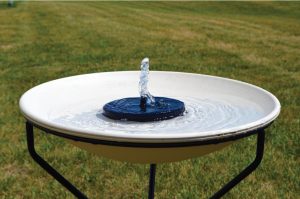
Attracting and Viewing Warblers
Warbler migration peaks in mid-September so now is the time to get ready for them. Birdbaths, especially with moving and noisy water, are a great way to get warblers in the open for a nice look. Ground and elevated birdbaths also work well. The simplest way to things moving is the Solar Powered Birdbath Bubbler (pictured) that can be easily inserted in any type of birdbath. Despite being insect eaters, there are some good food options for attracting Warblers. Many species make occasional visits to suet for the high energy beef fat, especially varieties that include insects, and fruit. HAPPY HUNTING!

